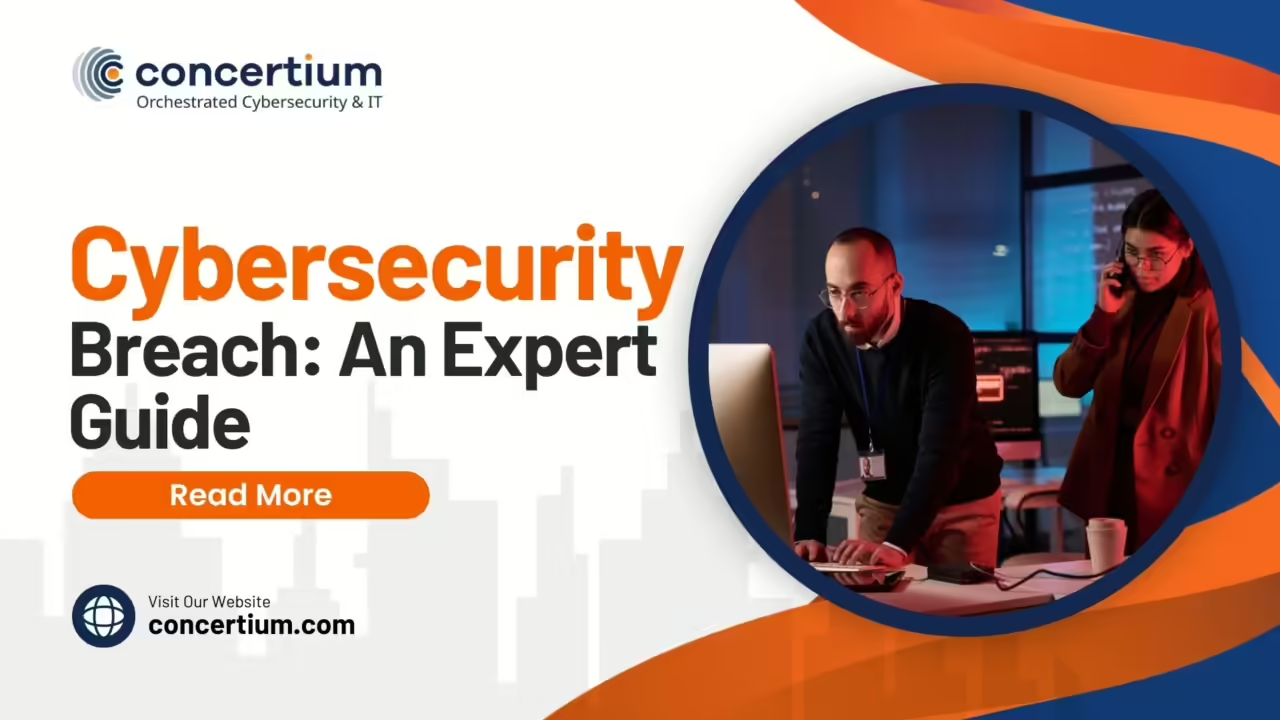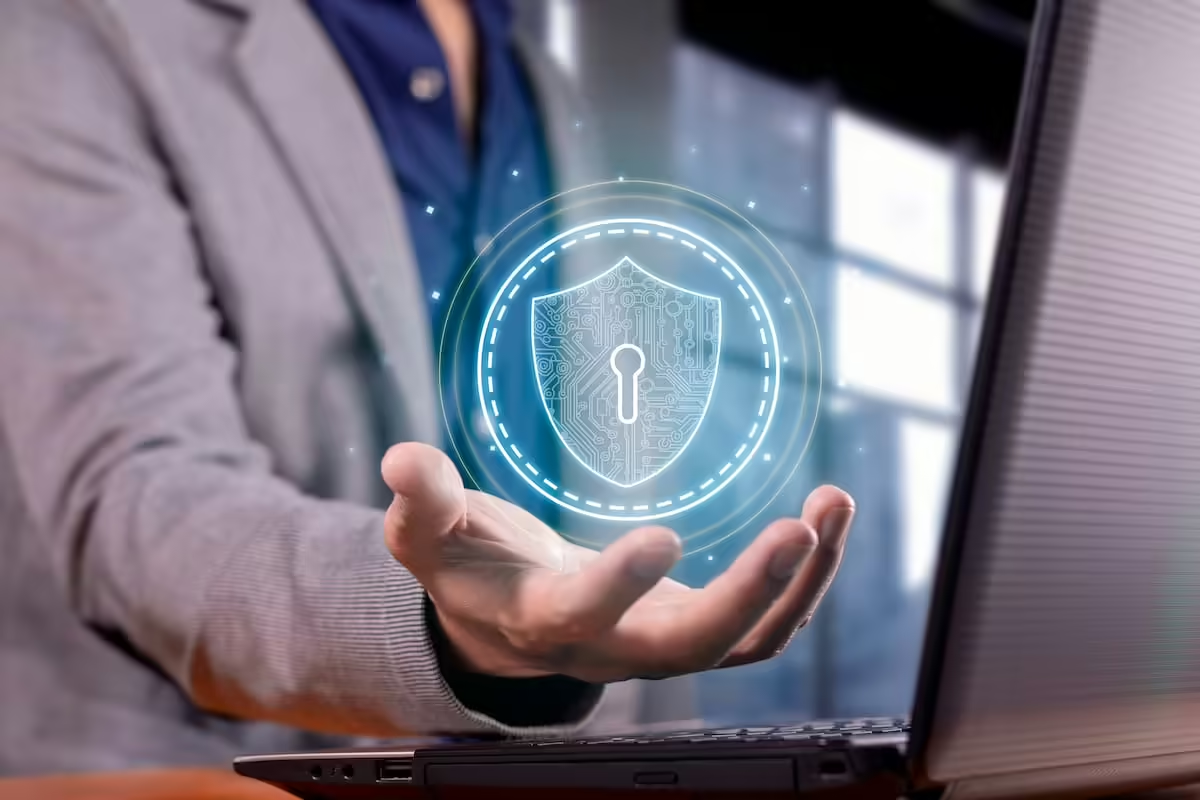Cybersecurity Breach
A cybersecurity breach is a security incident where unauthorized individuals gain access to sensitive information, systems, or networks. In 2024, the increasing sophistication of cyberattacks has made it essential for businesses and individuals alike to be vigilant and well-prepared. A breach can have far-reaching consequences, including financial losses, reputational damage, and legal repercussions. Understanding the nature of cybersecurity breaches and knowing how to respond effectively can help mitigate these impacts and protect your valuable data.
In this guide, we’ll explore the common types of cybersecurity breaches, the immediate steps you should take if your organization is affected, and how to assess the impact of the breach.
Common Types of Cybersecurity Breaches
Cybersecurity breaches come in various forms, each with its own set of challenges and implications. Understanding these types is the first step in preparing to respond effectively.
Phishing Attacks
Phishing is one of the most prevalent methods used by cybercriminals to initiate a data breach. It involves tricking individuals into providing sensitive information, such as login credentials or financial details, by pretending to be a trustworthy entity. Phishing attacks have evolved in 2024, with cybercriminals using more sophisticated tactics, including spear-phishing, which targets specific individuals or organizations.
Malware and Ransomware
Malware, short for malicious software, includes viruses, worms, and ransomware that can infiltrate a system and cause significant damage. Ransomware, in particular, encrypts a victim’s data and demands a ransom for its release. In 2024, ransomware attacks have become increasingly common, affecting organizations of all sizes.
Unauthorized Access
Unauthorized access occurs when cybercriminals exploit vulnerabilities in a system to gain access to sensitive information without permission. This type of breach is often the result of weak passwords, unpatched software, or misconfigured security settings.
Immediate Steps After a Cybersecurity Breach
When a cybersecurity breach occurs, the speed and effectiveness of your response can significantly impact the outcome. Here are the critical steps you should take immediately following a breach.
Assess the Extent of the Breach
The first step is to assess the extent of the breach. This involves determining what data has been accessed or stolen, identifying the affected systems, and understanding the scope of the damage. Quick and accurate assessment is crucial to contain the breach and prevent further unauthorized access.
For example, if a hacker gains access to a database containing customer Social Security numbers and credit card information, the company must immediately inform the affected customers and take steps to protect their identities, such as offering credit monitoring services.
Secure Your Systems
Once the breach has been assessed, the next step is to secure your systems to prevent further access. This involves taking the affected systems offline, isolating them from the rest of the network, and conducting a thorough investigation to understand how the breach occurred.
It’s also critical to reset all passwords, especially for accounts that may have been compromised. Implementing multi-factor authentication (MFA) and updating security protocols are essential measures to enhance security.
For instance, after a breach involving unauthorized access to employee accounts, a company might require all employees to change their passwords immediately and implement MFA to add an extra layer of protection. Additionally, any vulnerabilities that were exploited during the breach must be patched immediately to prevent recurrence.
Notify Relevant Authorities and Parties
In the aftermath of a cybersecurity breach, it’s important to comply with legal and regulatory obligations by notifying relevant authorities and parties. This includes adhering to data protection laws such as the Federal Trade Commission (FTC) guidelines in the U.S.
Notification must be made to all affected individuals, typically through a notification letter that explains the breach, the type of data compromised, and the steps being taken to mitigate the impact. In some cases, companies are also required to notify regulatory bodies within a specific timeframe, often within 72 hours of discovering the breach.
Understanding the Impact of the Breach
The impact of a cybersecurity breach can be extensive, affecting not just the company but also its customers, employees, and partners. Understanding these impacts is essential for effective recovery.
Cost and Financial Impact
The financial impact of a cybersecurity breach can be devastating. Costs associated with a breach include not only the immediate expenses of investigation, remediation, and legal fees but also long-term costs such as regulatory fines, loss of customer trust, and decreased stock value.
In 2024, the average cost of a data breach has continued to rise, with companies facing multimillion-dollar losses. Companies must consider these potential costs when developing their cybersecurity strategies and ensure they have adequate insurance coverage to mitigate financial risks.
Data Compromised and Potential Risks
The type of data compromised in a breach determines the potential risks to individuals and organizations. Sensitive information such as Social Security numbers, bank account details, and personal health data can be particularly damaging if exposed.
It’s crucial to assess the specific risks associated with the compromised data and take appropriate actions to protect the affected individuals, such as offering identity theft protection services or advising them to place a credit freeze.
Cybersecurity Breach Examples and Lessons Learned
Examining real-world examples of cybersecurity breaches can provide valuable insights into how such incidents occur and what steps companies can take to prevent them.
High-Profile Breaches of 2024
Several high-profile breaches in 2024 have underscored the evolving threat landscape and the need for robust cybersecurity measures. These breaches involved sophisticated attacks by cybercriminals who exploited vulnerabilities in company systems.
Lessons learned from different breach occurred include the importance of advanced threat detection systems, regular security audits, and employee training on recognizing phishing attempts. Companies must stay vigilant and continually update their security protocols to adapt to new and emerging threats.
Prevention Strategies Post-Breach
After experiencing a cybersecurity breach, it’s crucial to take steps to prevent future incidents. This involves strengthening your organization’s cybersecurity measures, utilizing monitoring and identity protection services, and training employees on cybersecurity awareness.
Strengthening Cybersecurity Measures
The first step in preventing future breaches is to reinforce your organization’s cybersecurity infrastructure. This includes updating and patching all software to eliminate vulnerabilities that could be exploited by hackers. Regular security audits should be conducted to identify and address potential weaknesses in your systems.
Implementing multi-factor authentication (MFA) is essential to add an extra layer of security, ensuring that unauthorized individuals cannot gain access even if they have obtained login credentials. Additionally, it’s vital to regularly update firewalls, intrusion detection systems, and antivirus software to defend against the latest threats.
In the wake of a breach, many companies also choose to engage cybersecurity firms to conduct thorough assessments of their networks and provide recommendations for improving security. This proactive approach not only helps in preventing future breaches but also reassures customers and stakeholders that the organization is committed to data protection.
Monitoring and Identity Protection Services
Following a breach, affected individuals are often at risk of identity theft or fraud. To mitigate these risks, companies should offer monitoring and identity protection services to those impacted by the breach.
Credit monitoring services can alert individuals if their personal information is used in suspicious ways, such as applying for a loan or opening a new credit account. Additionally, identity theft protection services can help victims recover from identity theft by providing legal assistance, fraud alerts, and other support.
Companies should also encourage individuals to place a credit freeze on their accounts, making it more difficult for criminals to open new lines of credit using stolen information. Providing clear instructions on how to do this can be part of the breach response plan.
Training Employees on Cybersecurity Awareness
One of the most effective ways to prevent future breaches is by educating employees about cybersecurity risks and best practices. Human error is often a significant factor in security breaches, whether through falling for phishing scams or mishandling sensitive data.
Training programs should focus on teaching employees how to recognize phishing emails, social engineering tactics, and other common threats. Regular training sessions and simulated phishing attacks can help reinforce this knowledge and ensure that employees remain vigilant.
In addition to training, companies should establish clear protocols for reporting suspicious activities. Employees should know who to contact if they receive a suspicious email or notice unusual behavior in the system. Encouraging a culture of cybersecurity awareness can significantly reduce the likelihood of a breach occurring due to human error.
Legal and Regulatory Considerations
Navigating the legal and regulatory landscape after a cybersecurity breach is a complex but necessary task. Compliance with data protection laws and maintaining thorough documentation of the incident are critical components of the post-breach response.
Compliance with Data Protection Laws
In the aftermath of a breach, organizations must ensure they comply with all relevant data protection laws, such as the General Data Protection Regulation (GDPR) in Europe and the Federal Trade Commission (FTC) regulations in the United States. Failure to do so can result in hefty fines and legal consequences.
For example, under GDPR, companies must notify affected individuals and the relevant data protection authority within 72 hours of discovering a breach. This notification must include details about the breach, the data involved, and the steps being taken to mitigate the impact.
Companies should also review their data protection policies and procedures regularly to ensure ongoing compliance with the latest regulations. This includes conducting data protection impact assessments (DPIAs) for any new projects that involve personal data processing.
Ensuring compliance with data protection laws not only helps avoid legal repercussions but also builds trust with customers and stakeholders, demonstrating the company’s commitment to protecting personal information.
Incident Response Plans and Documentation
Having a well-defined incident response plan is essential for effectively managing a cybersecurity breach. This plan should outline the steps to be taken immediately following a breach, including how to secure the systems, assess the impact, and notify the relevant authorities.
An incident response plan should be regularly reviewed and updated to reflect changes in the threat landscape and the organization’s operations. It should also include clear roles and responsibilities for all team members involved in the response, ensuring that everyone knows what to do in the event of a breach.
In addition to the response plan, thorough documentation of the breach is crucial. This documentation should include a detailed account of how the breach occurred, the data that was compromised, the steps taken to mitigate the damage, and the lessons learned. This information is invaluable for legal and regulatory purposes and can also help prevent future breaches by identifying areas for improvement.
What People May Also Ask
How Can I Protect My Personal Information After a Breach?
Protecting your personal information after a breach involves several key steps. First, you should change your passwords, especially for any accounts that may have been compromised. It’s also advisable to enable multi-factor authentication (MFA) on your accounts to add an extra layer of security.
What Are the Long-Term Effects of a Cybersecurity Breach?
The long-term effects of a cybersecurity breach can be significant, especially if sensitive information such as Social Security numbers, financial details, or personal health data is compromised. Victims of identity theft may experience ongoing issues, including financial losses, damage to their credit scores, and the stress of dealing with fraud.
How Much Does Recovering from a Breach Cost?
The cost of recovering from a cybersecurity breach can vary widely depending on the size of the breach and the extent of the damage. Costs typically include immediate expenses such as investigation, remediation, legal fees, and notification of affected individuals. There are also long-term costs, such as regulatory fines, loss of business, and reputational damage.
Conclusion
In the wake of a cybersecurity breach, the actions taken in the immediate aftermath are critical in minimizing damage and preventing future incidents. From assessing the extent of the breach to securing systems and complying with legal obligations, a structured and well-informed response is essential.
Preventative measures such as strengthening cybersecurity, offering monitoring services, and educating employees play a vital role in safeguarding against future breaches. Legal and regulatory compliance, along with thorough documentation of the incident, ensures that the organization is prepared for any repercussions.
By following the guidelines outlined in this expert guide, organizations can navigate the challenges of a cybersecurity breach effectively, protecting their data, reputation, and long-term success.





